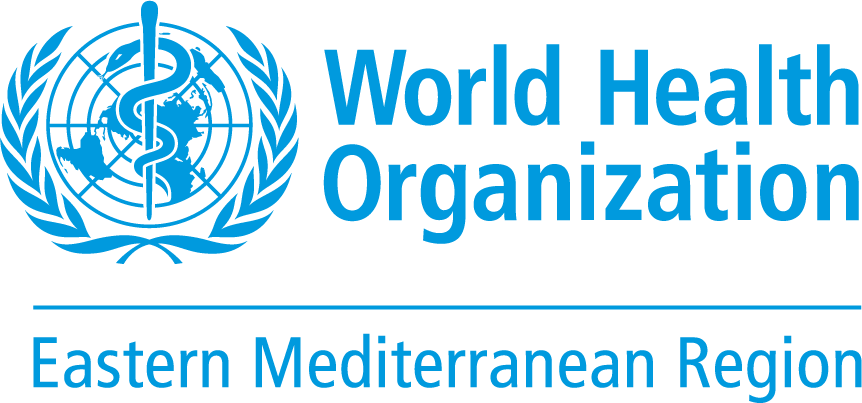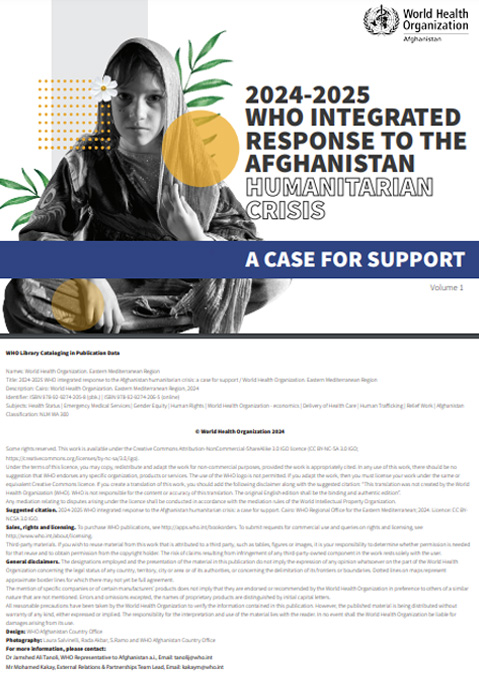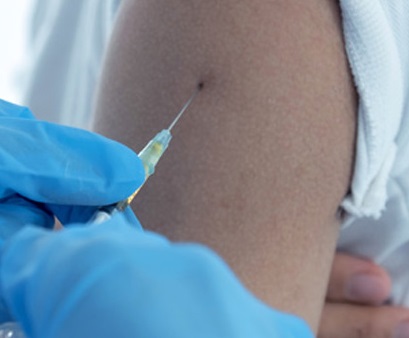7 July 2024, Kabul, Afghanistan – In response to the growing threat of infectious disease outbreaks in Afghanistan, WHO launched a series of risk communication and community engagement (RCCE) campaigns in June 2024. The campaigns targeted the provinces of Balkh, Herat and Kandahar.
WHO Afghanistan trained and deployed 110 community mobilizers to carry out the mass awareness activities. These focused on prevention of Crimean-Congo haemorrhagic fever (CCHF), acute watery diarrhoea, measles and other infectious diseases. The activities have equipped locals with the knowledge and tools to protect themselves and their communities from these life-threatening diseases.
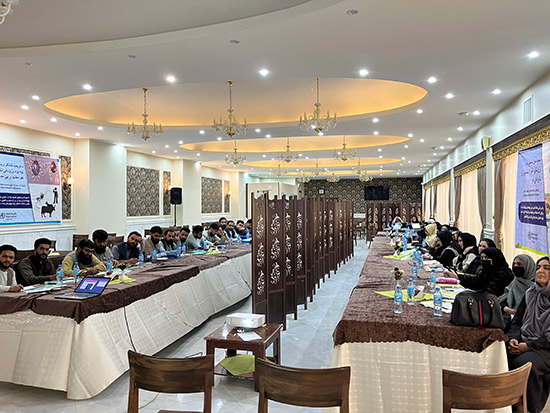 Community mobilizers receive orientation prior to the community awareness campaign on CCHF prevention. Photo credit: WHO/M. Islami
Community mobilizers receive orientation prior to the community awareness campaign on CCHF prevention. Photo credit: WHO/M. Islami
For its 7-day mass awareness campaign at the community level, WHO deployed all 110 newly trained community mobilizers, including a significant number of women, to 25 districts across Balkh, Herat and Kandahar. The mobilizers worked to raise awareness about prevention of CCHF, acute watery diarrhoea, measles and other potentially fatal infectious diseases.
 A community mobilizer provides health education to a group of butchers in Herat province. Photo credit: WHO/M. Islami
A community mobilizer provides health education to a group of butchers in Herat province. Photo credit: WHO/M. Islami
The community mobilizers visited health facilities, schools, mosques and community centres as well as bazaars, animal markets and slaughterhouses to raise awareness about CCHF, its transmission and prevention.
CCHF is a viral haemorrhagic fever transmitted to people either by tick bites or through contact with infected animal blood or tissues during or directly after slaughter. Most cases have occurred in people involved in the livestock industry, such as agricultural workers, slaughterhouse workers and veterinarians.
“People’s participation is key to successful implementation of public health interventions. Through the mass awareness campaign, we engaged community elders to help spread health messages to their families and communities, resulting in greater and active participation,” said Abdul Rahman Mansouri, a community mobilizer from Herat province.
 A team of community mobilizers delivers health messages at a mosque in Pashtun Zarghun district of Herat. Photo credit: WHO/M. Islami
A team of community mobilizers delivers health messages at a mosque in Pashtun Zarghun district of Herat. Photo credit: WHO/M. Islami
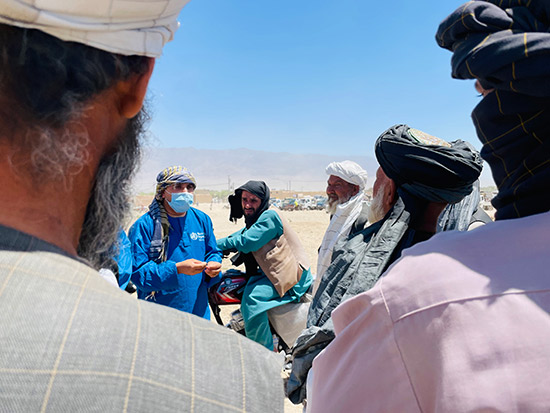 Abdul Rahman Mansouri, a community mobilizer from Herat, talks to a group of livestock owners about the risks of CCHF and possible preventive measures. Photo credit: WHO/M. Islami
Abdul Rahman Mansouri, a community mobilizer from Herat, talks to a group of livestock owners about the risks of CCHF and possible preventive measures. Photo credit: WHO/M. Islami
“Women are particularly at risk of CCHF because they look after animals and take care of meat at home. There are fewer opportunities to reach women with timely health information,” said community mobilizer Nooria Aryan. “I was happy and proud to be able to educate women in health facilities, schools and the community about CCHF preventive measures during the mass awareness campaign.”
 Nooria Aryan, a community mobilizer in Herat, shares information about CCHF with a group of women visitors at a health facility in Guzara district of Herat. Photo credit: WHO/M. Islami
Nooria Aryan, a community mobilizer in Herat, shares information about CCHF with a group of women visitors at a health facility in Guzara district of Herat. Photo credit: WHO/M. Islami
Nabila Qazizada, a health educator in Herat, explained: “It’s very important for the students and their families to know about CCHF risks and prevention to avoid infections and serious health issues. I volunteered to educate all my students about CCHF because they will deliver these messages to their families, expanding the impact of the awareness programme.”
Masoud Faizi, a male health mobilizer, also commented “It was a unique experience to meet people from different communities through the campaign and increase awareness about CCHF,” he added. “The level of awareness about public health issues at the community level is substantially low.”
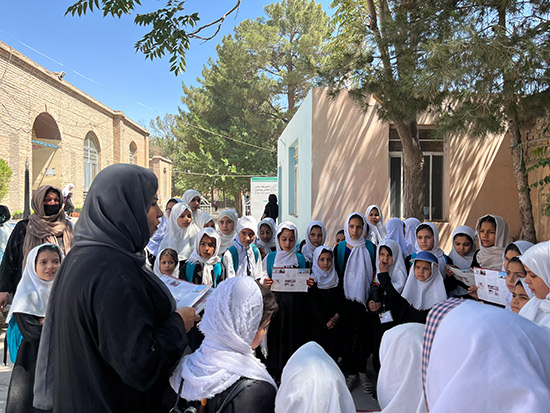 Nabila Qazizada, a health education teacher at Atefi Girls School, speaks to a group of students about CCHF risks and how to protect themselves and their families. Photo credit: WHO/M. Islami
Nabila Qazizada, a health education teacher at Atefi Girls School, speaks to a group of students about CCHF risks and how to protect themselves and their families. Photo credit: WHO/M. Islami
 Masoud Faizi, a community mobilizer, provides information about CCHF at a public school in Injil district of Herat. Photo credit: WHO/M. Islami
Masoud Faizi, a community mobilizer, provides information about CCHF at a public school in Injil district of Herat. Photo credit: WHO/M. Islami
Dr Jamshed Tanoli, acting WHO Representative to Afghanistan, expressed gratitude to the partners and donors whose contributions enabled these vital health education and risk mitigation campaigns to go ahead. He emphasized the importance of these activities: “By planning and implementing targeted RCCE campaigns, WHO ensures that communities are empowered with accurate and timely health information to protect themselves from infectious diseases and improve public health in the country.”
WHO in Afghanistan would like to express its gratitude to the US Agency for International Development (USAID) for their support in implementing the RCCE campaigns in the targeted provinces of Balkh, Herat, and Kandahar.
